The Dunckley Northern features mining, a downtown, and modified engines
The railroad at a glance
Railway name: Dunckley Northern Railway (DNR)
Size of railroad: Covering an odd shaped garden approximately 70′ x 70′
Scale: 1:24
Gauge: 45mm for 3’6″ gauge and 64mm for standard gauge
Era: Late 1930s
Theme: The DNR is a colonial railway in an undisclosed country. The Consolidated Concentrates Conglomerate (CCC) branch is owned by a US mining company and connects the DNR to its standard-gauge parent, The Mason Alameda & Dunckley Railroad Navigation & Drayage Company (MA&DR).
Motive power: Scratchbuilt and kitbashed steam, diesels, and railcars
Length of mainline: Approximately 900′
Maximum gradient: 4%
Type of track: Llagas Creek code 250 for the 3’6″ gauge; handlaid dual gauge.
Minimum radius: 6′
Structures: Scratchbuilt, kitbashed, and kit-built
Control system: RCS radio control of battery-powered locomotives
Read the original feature story of the DNR.
Read an article about elevating the track on the DNR.

It’s nighttime at the Wombat engine terminal on John Morrison’s pre-1940 Dunckley Northern Railway in Redmond, Wash. The DNR’s scratchbuilt 2-8-2+2-8-2 Beyer Garratt is being serviced. John Morrison photo


The lower track goes to the dual gauge yard at Newton. The middle track and the track on the back fence are part of the mainline loop. The “table” to the right on the middle track, is the base for Blue Spruce town and coal mine. All the track is painted and only the track on the tables is ballasted. The train is hauled by DNR No. 13, an Aristo-Craft 2-8-0 chassis under an LGB Mogul body and DNR No. 6, is a lightly modified LGB Mogul. John Morrison photo


The dual gauge yard at Newton, with CCC No. 104, a 2-8-2 built on a Barry’s Big Train motor block, and CCC No. 110, a 2-6-6-0 built on a complete LGB European 0-6-6-0 chassis. They are moving a freight train under the Maitah Mine hopper for loading. The mine building is built from styrene with Grandt Line windows. There are five custom dual gauge switches from Llagas Creek in the yard and a dual gauge turntable. John Morrison photo


DNR No. 9 is a “colonial” 2-8-0 built on a lengthened, LBG Mogul chassis. It’s on the main loop line, 3 feet off the ground, and is running through a Japanese maple (Acer palmatum). John Morrison photo


CCC No. 104 is in the Wombat engine depot. The Vanderbilt tender was built from styrene. The water tank and coal loader are built of styrene. All the “weeds” are natural moss (this is Seattle after all!). The Morris Minor with railway wheels is the boss’s inspection car! John Morrison photo


DNR No. 108, a 4-6-0 built on a Barry’s Big Train motor block, hauls CCC varnish. The dining car in the middle of the train is a lengthened Bachman car. The other four passenger cars are lengthened LGB vehicles, and the baggage car is standard length LGB. The curve is 9 feet radius. John Morrison photo


Wombat station loading dock, with the Weedan Feed Store to the right. John Morrison photo


All the light bulbs on the railway are 16-volt grain of wheat on a 12-volt power supply. Being a lower voltage and incandescent, they give off a natural yellowish light. This is downtown Wombat and the headquarters of the DNR. The building fronts are from Colorado Model Structures and are attached to simple styrene boxes. John Morrison photo






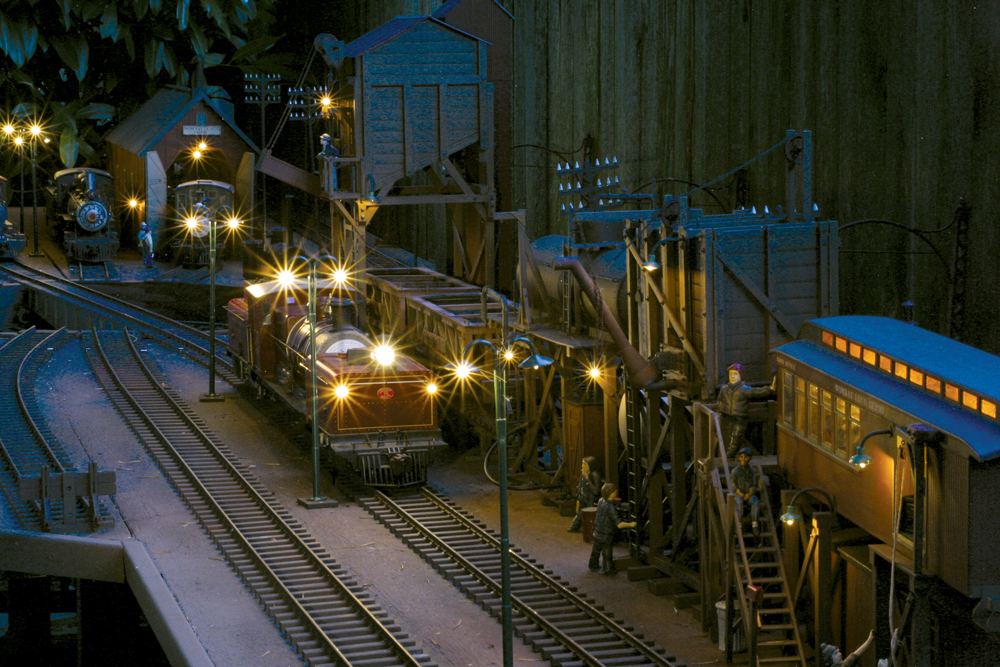

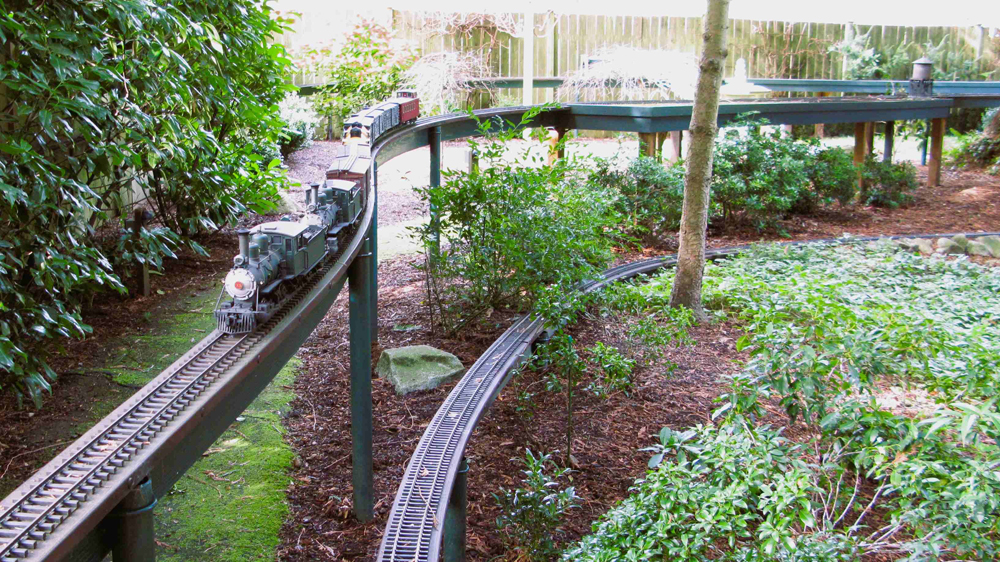

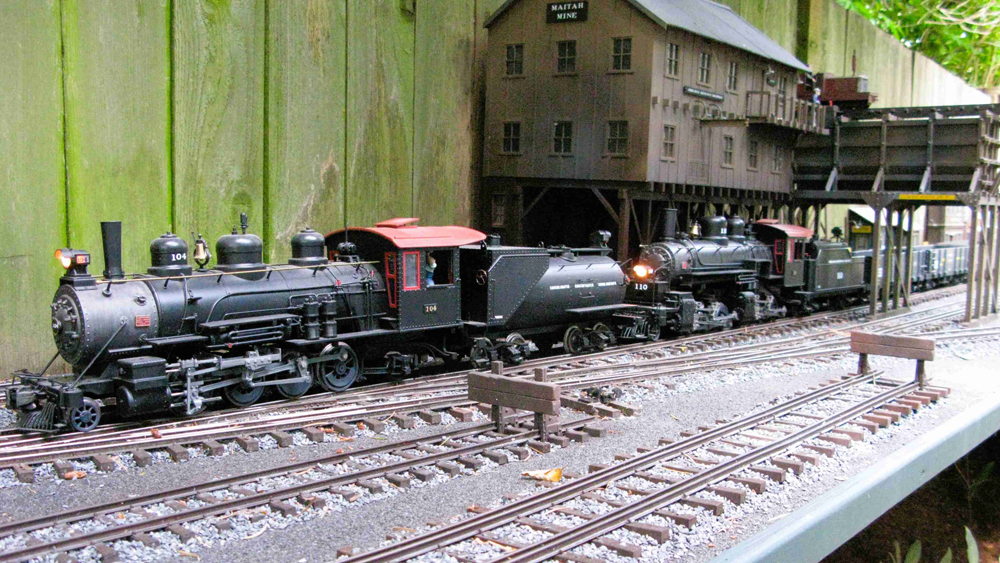

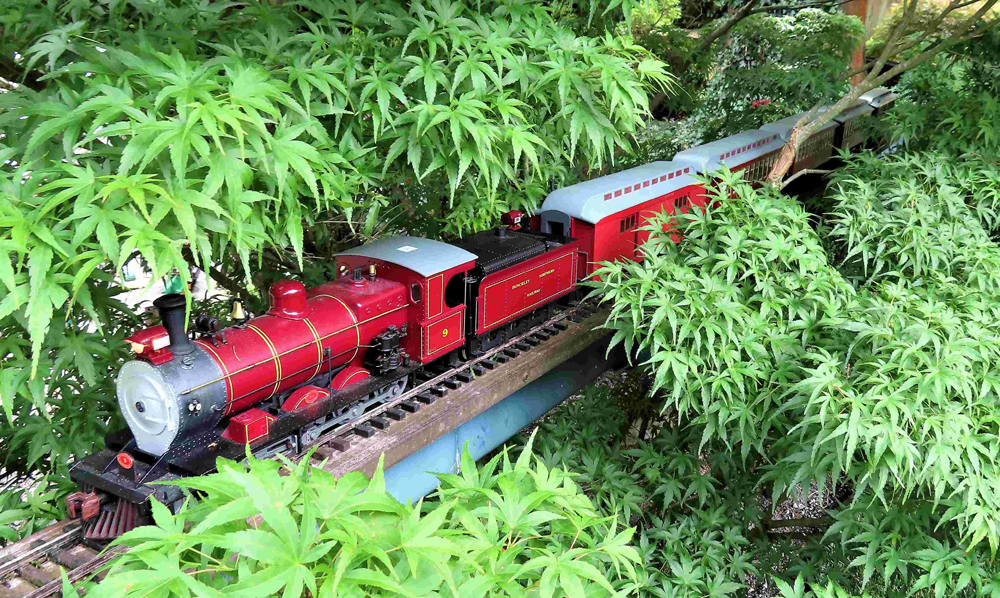

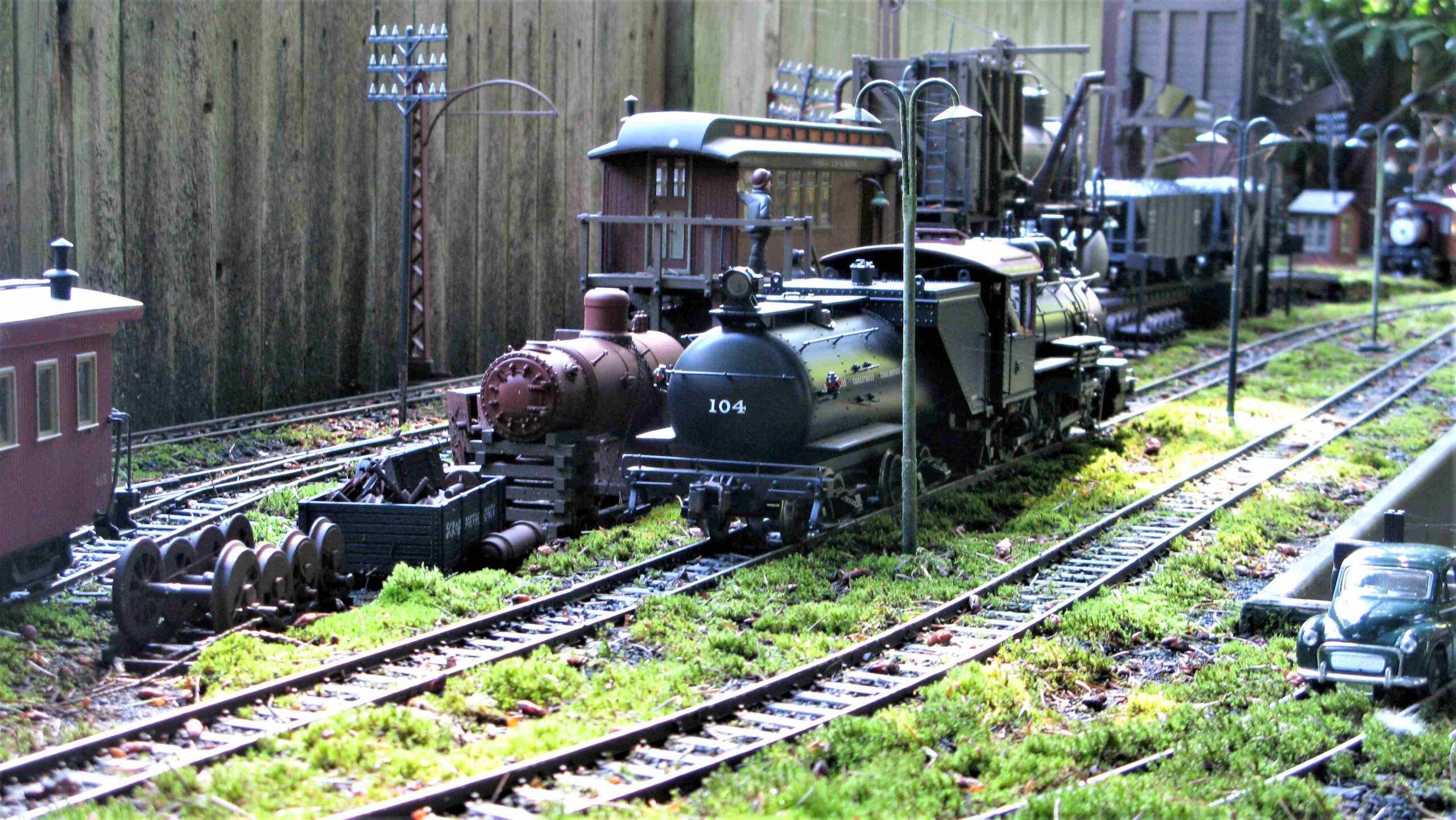

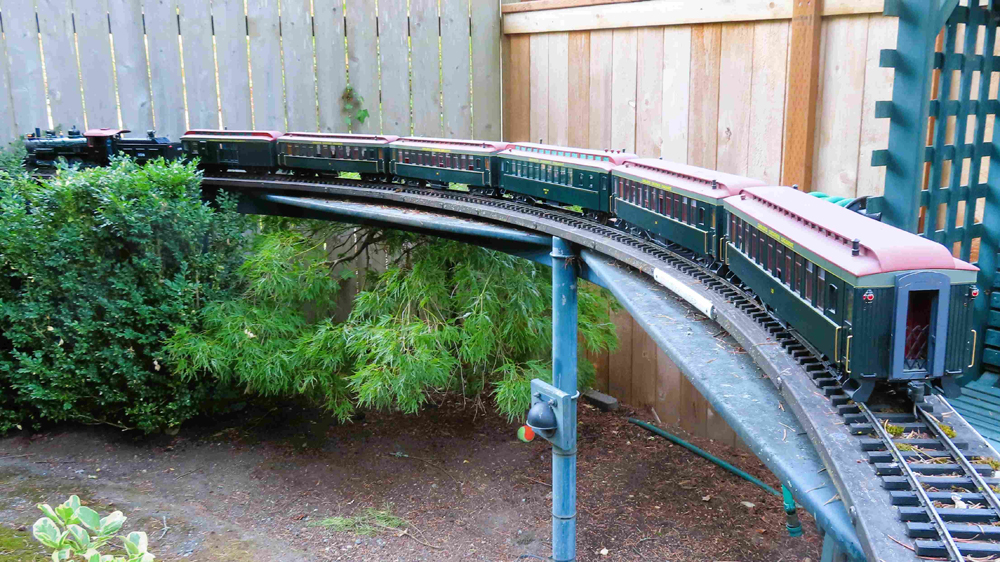

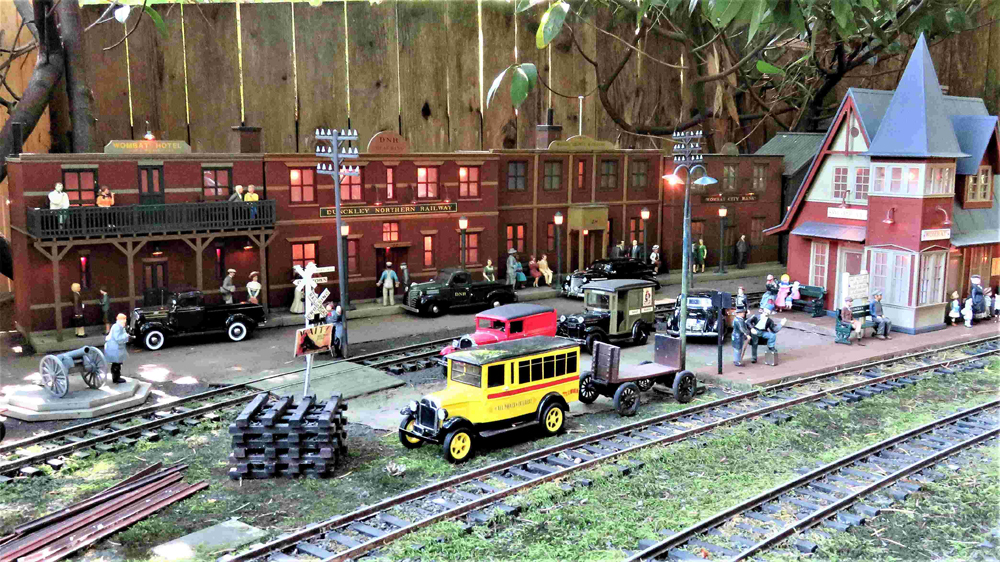

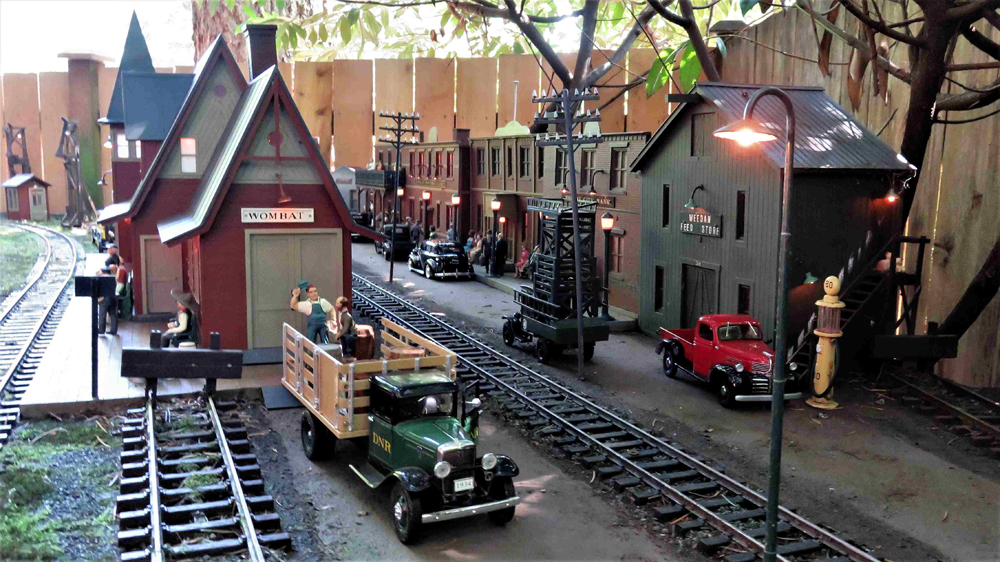










Great looking scenery views and town detailing aspects. Thanks for posting ♥